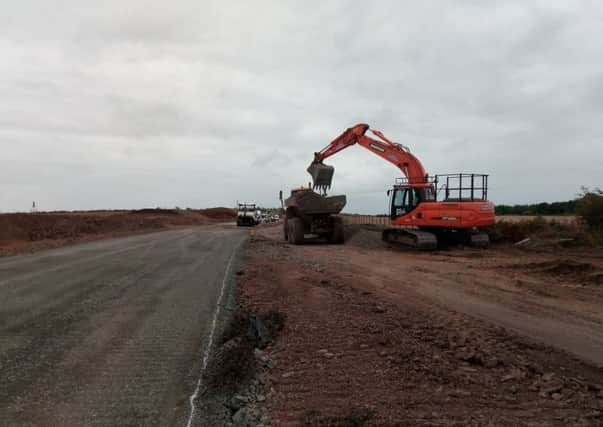Behind the scenes on new Morpeth bypass


But just as important are the team behind the scenes – from those involved in the state-of-the-art computer modelling to the experts making sure there are suitable habitats for the local bat population.
I discovered this first-hand when I went to have a closer look at the Morpeth Northern Bypass site.
Advertisement
Hide AdAdvertisement
Hide AdThis project has been discussed for many years and the application for the link road was submitted in summer 2013. After going through all the legal stages, it received final approval from the Department for Transport and construction works began in spring 2015.
Once completed, the £30million scheme, which is a partnership between Northumberland County Council and contractors Carillion, will cut congestion in Morpeth and reduce travel time between the A1 and south-east Northumberland.
This week, the finishing touches were being applied to the road structure in the Pegswood Moor area.
Project manager Scott Beattie said: “We had problems in January and February because of the significant rainfall, but the dry conditions over the summer has enabled the team to make good progress.
Advertisement
Hide AdAdvertisement
Hide Ad“Despite the other challenges and unexpected issues we’ve come across when working on the site, we’ve hit the key milestone dates and are on course to complete the scheme on time.
“Vehicles are currently using the slip roads at St Leonard’s junction, but the main A1 with two lanes on each carriageway should be back open to traffic again in late November or in December.
“In terms of the future development of engineers in the region, this project has been a great experience for our apprentices and trainee engineers.”
A major part of the project is works and activities in relation to the environment, including wildlife conservation.
Advertisement
Hide AdAdvertisement
Hide AdFor example, new bat roosts are being set up close to the site, bat boxes have been put in place on site and the culvert at How Burn is larger than normal due to the high-flying bats in the area.
A mammal underpass has been installed and amphibians found in the ponds on site have been relocated.
Leanne August, senior sustainability manager at Carillion, said: “The teams on site are very well educated about the wildlife in the area and we take measures to protect the various animals.
“The works have included ramps and other methods being installed at manholes and excavations to allow badgers to get out of them if required.
Advertisement
Hide AdAdvertisement
Hide Ad“If any trees that may contain bats need to be cut down, we use soft felling and leave them for 24 hours so any bats can leave of their own accord.
“We have won a national award for our community engagement on our biodiversity works with school pupils and a range of local organisations.”